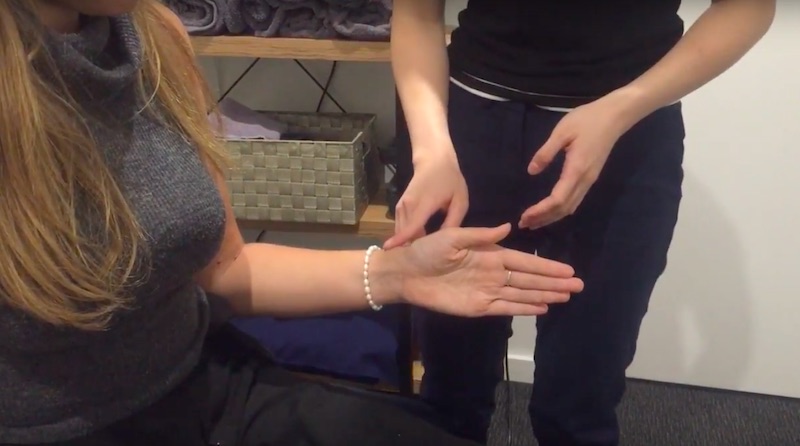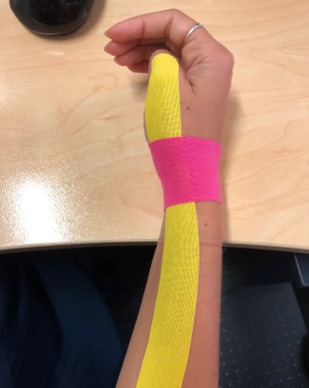
THUMB PAIN WHEN YOU ARE TEXTING? ARE YOU A NEW MUM WITH THUMB PAIN?
Have you been noticing wrist pain when you are texting? Has your grip strength weakened? If your answer is ‘yes’, you may be experiencing De Quervain Tenosynovitis. It is often also called “texting thumb” or “technology related injuries”
What is De Quervain Tenosynovitis?
Tenosynovitis is an inflammation of the tendon and its surrounding sheath (also known as ‘synovium’). De Quervain’s Tenosynovitis affects two tendons: Abductor pollicis longus (abduction of the thumb) and extensor pollicis brevis (Extension of the thumb).
In De Quervain Tenosynovitis, the most common complaint is the pain. Pain is due to inflammation of the tendon sheath of the two muscles (abductor pollicis longus and extensor pollicis brevis) as they pass through the fibre-osseous tunnel at the level of the radial styloid process. Inflammation can be caused by repetitive stress on the area, such as repeated grasping, pinching and squeezing of the thumb.
De Quervain Tenosynovitis is most common in female between 30-50 years of age. It is also common in new mothers who repeatedly lift and hold the baby using their thumb. Certain occupations such as hairdressers and carpenters that involve repetitive wrist and thumb movements may also be more inclined to develop this condition.
How can you tell that you have been experiencing De Quervain Tenosynovitis?
When experiencing De Quervain’s, the inflammation of the joint and tendon causes swelling and scar tissue formation, which can lead to the movement of the tendon, which is meant to be smooth, becoming quite limited. You may have De Quervain Tenosynovitis is you are experiencing:
- Swelling around the base of the thumb, also known as the carpal-radial joint, or swelling of the tendon
- Pain with gripping your phone and typing on the computer
- Pain and resisted movement of the thumb, especially abduction and extension
If your pain is causing you lots of discomfort, or you are experiencing these symptoms, you should follow up with a medical professional, such as a physiotherapist, chiropractor, osteopath, or your general practitioner, where they can examine your case and determine the cause of your pain, through methods such as the Finkelstein test.
Management and treatment of De Quervain Tenosynovitis
The best management if you are experiencing De Quervain Tenosynovitis is to rest the joints and muscles around the thumb, and to normalise the function of the thumb, wrist and elbow joints, as these are the joints that the Abductor pollicis longus (abduction of the thumb) and extensor pollicis brevis (Extension of the thumb) cross.
Avoiding activities that aggravate the injury, as well as icing, is the most important treatment that you can provide for yourself. However, in seeking professional help for your pain, your health professional will employ techniques such as:
- Ultrasound the affected area
- Mobilisation and manipulation techniques for the wrist joint by your manual therapist
- Acupuncture
- Taping to limit the movement of your wrist and prevent aggravation
- NSAIDs (Non-Steroidal Anti-Inflammatory Drugs) and,
- Surgical intervention, if severe

Reference
- Hadianfard, M., Ashraf, A., Fakheri, M. and Nasiri, A., 2014. Efficacy of acupuncture versus local methylprednisolone acetate injection in De Quervain’s tenosynovitis: a randomized controlled trial. Journal of acupuncture and meridian studies, 7(3), pp.115-121.
- Le Manac’h, A.P., Roquelaure, Y., Ha, C., Bodin, J., Meyer, G., Bigot, F., Veaudor, M., Descatha, A., Goldberg, M. and Imbernon, E., 2011. Risk factors for de Quervain’s disease in a French working population. Scandinavian journal of work, environment & health, pp.394-401.
- Wolf, J.M., Sturdivant, R.X. and Owens, B.D., 2009. Incidence of de Quervain’s tenosynovitis in a young, active population. Journal of Hand Surgery, 34(1), pp.112-115.
